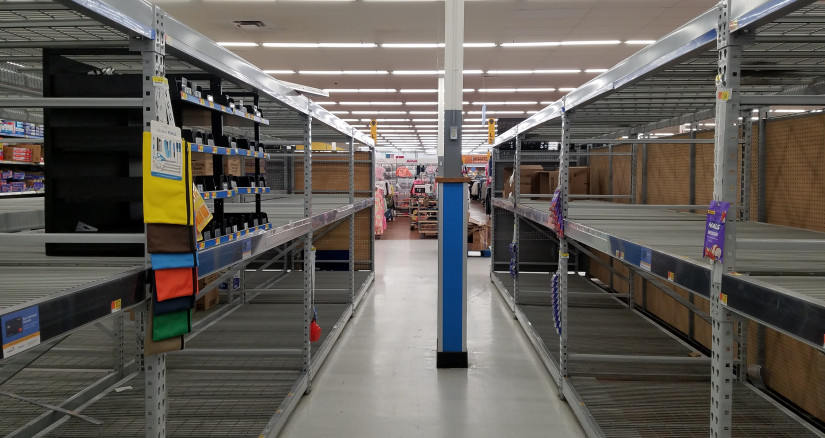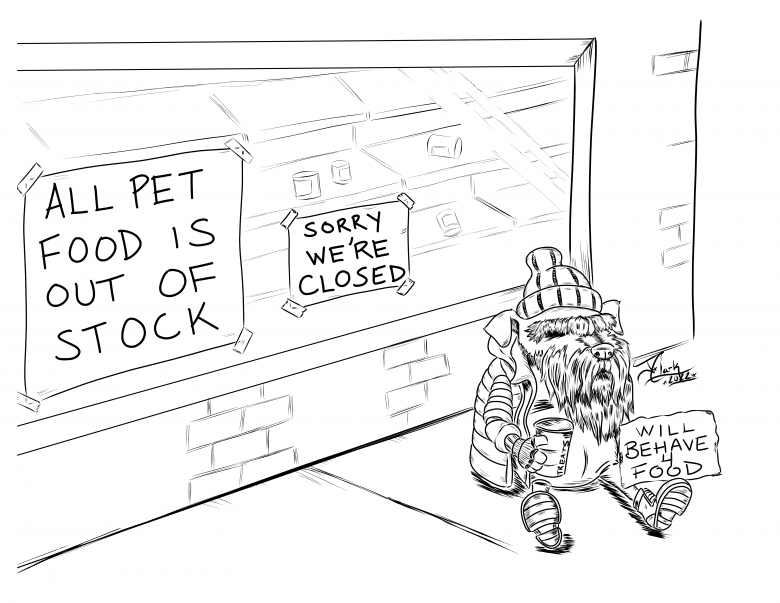
Out of Stock – What to Know About the Recent Pet Food Shortage
In short, the pet food shortage is problematic and affects all pet owners, but why is it happening?
The perfect storm
The COVID-19 pandemic hit everything hard, except the rate of pet adoption. During quarantine, many took the opportunity to adopt an animal, which was fantastic news for shelters and the animals looking for their forever home. According to a survey, pet ownership increased to roughly 70% in 2021 and 35% of pet owners reported spending more on pet supplies over the past 12 months.1 However, that put an increase in the demand for pet food products, with the Wall Street Journal noting pet food sales grew an estimated 7% in 2021.2 While agriculture lives on if there are no workers in manufacturing plants, coupled with the shortage of aluminum, and supply chain coordination issues, this leads to a perfect storm for many products and numerous brands reporting temporarily out-of-stock.
For those that are still in stock, pet parents may be experiencing a price increase as great as triple the original price.3 As of earlier this month (March 2022), despite manufacturing plants resuming operations, ingredients that are commonly used in pet foods are becoming harder to source. Those that can be sourced within the country come with a premium, with as high as a 20% markup. For those ingredients coming from overseas, not only is it a higher price point due to the ingredients and supply chain but also due to the transportation needed to get raw materials to the US.

Illustrator: Jonathan Clark
How are pet parents affected?
Pet owners are feeling the effect of the temporary out-of-stock products. Whether it is a go-to product, one a pet has been on for its entire life, the only product/flavor a pet will eat, or a therapeutic product needed for a medical condition, pet parents are feeling the challenge of finding products. Moreover, an abrupt diet change can cause gastrointestinal upset or can be harmful to those who need a therapeutic diet. Here are a few helpful tips to avoid this dilemma.
Be prepared and plan ahead. When purchasing food, plan for roughly three months of food. If purchased more than 3 months’ worth, it may expire before the pet eats it. However, storing the food is also important. Sometimes food is dumped from its bag into a storage container, but most pet food bags are made with material to help with shelf life. Smaller bags may be ideal for some, as it will allow the other bags to remain sealed until needed.
If a pet needs a therapeutic diet, talking with a veterinarian or board-certified veterinary nutritionist about appropriate alternatives may help if the therapeutic diet goes out of stock.
What does this mean for future purchases?
If a dietary switch is necessary, a slow transition over 7-10 days is more ideal than a sudden change. Shopping around before the pet is completely out of food will help make this transition smoother. If the food is already out of stock, investigate different bag sizes. Sometimes only a specific size bag is out of stock; therefore, it may require buying multiple smaller size bags, but at least it’s the same food! Shop around to different online stores and retailers by calling customer service directly. Sometimes they can inform you of which retailers may still be in stock.
Exhausting these options and still having no luck? Here are a few things to keep in mind when selecting an alternative diet.
- Check calories – Pet foods are not all the same calorie content; for example, a cup of the pet’s original diet may not be equal to a cup of an alternative diet. Finding a caloric density like the original diet can help avoid feeding excess calories.
- Diving deeper into ingredients – if really in a bind, evaluating if a pet really needs a limited ingredient diet or specific properties of the out-of-stock food. There may be many more options to choose from.
- Leveraging technology – to exhaust all options before finding an alternative, turn to technology. Stores keep their inventory up to date electronically. Also, many brand websites have a section to “find local retailers”, which can help broaden the search.
Seeing empty shelves in pet food stores and searching e-commerce only to find out of stock galore can be quite overwhelming; however, pets can experience this post-pandemic food shortage with minimal gastrointestinal effects with these helpful tips in mind and a plan. When in doubt, consult with your veterinary nutritionist for the best alternative foods.
Resources:
- Burgess, P. American Pet Products Association Release Newest Edition of National Pet Owners Survey. 2021. https://www.americanpetproducts.org/press_releasedetail.asp?id=1242
- Kang, J. The Pet-Food Shortage is Real, and Owners are Scrambling. “It’s Been a Waking Nightmare”. The Wall Street Journal. 2021. https://www.wsj.com/articles/the-pet-food-shortage-is-real-and-owners-are-scrambling-its-been-a-waking-nightmare-11640103574
- Stoddard, C. Canned pet food shortage continues amid supply chain woes. 2022. Fox 6 Now News. https://www.fox6now.com/news/canned-pet-food-shortage-continues-amid-supply-chain-woes
Follow us on LinkedIn for the latest updates on all things happening here at BSM Partners.
About the Author
Dr. Stephanie Clark is a board-certified companion animal nutritionist, veterinary nurse and nutrition specialist, a pet owner, and a mother who had a baby during the formula shortage. She has spent the past almost two decades dedicating her career to the welfare of pets, livestock, and wildlife. She currently provides nutritional consultations for veterinary clinics and works in the pet food industry.
This content is the property of BSM Partners. Reproduction or retransmission or repurposing of any portion of this content is expressly prohibited without the approval of BSM Partners and is governed by the terms and conditions explained here.